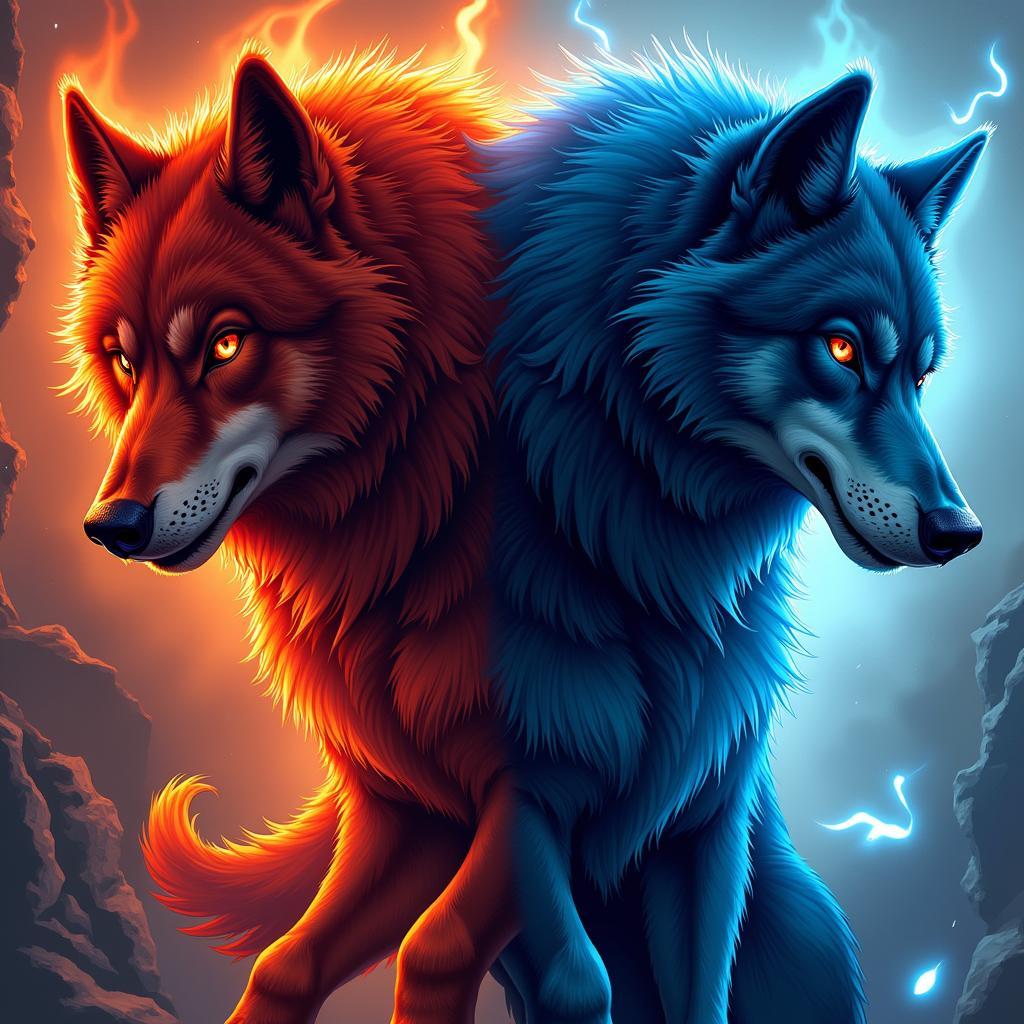The age-old question, what color is a werewolf, sparks curiosity and fuels the imagination. While classic depictions often portray them in shades of brown or grey, the truth is far more nuanced, drawing from folklore, literature, and personal interpretations. Let’s delve into the fascinating world of werewolf coloration and explore the diverse spectrum of hues attributed to these mythical creatures.
Unveiling the Werewolf Color Palette
Werewolves, the shape-shifting beings of folklore, have captivated audiences for centuries. Their color, however, is often a subject of debate. There is no single definitive answer to “what color is a werewolf?” as depictions vary greatly depending on the source. From classic greys and browns to more fantastical hues, the werewolf’s coat color is often a reflection of its nature, power, and the specific lore surrounding it.
Traditional Werewolf Hues: Grey and Brown
The most commonly depicted werewolf colors are grey and brown. These earthy tones connect the werewolf to its wild, animalistic nature, blending seamlessly with forest and nighttime settings. Grey, often associated with age and wisdom in animals, can signify a powerful, experienced werewolf. Brown, on the other hand, represents earthiness and strength, further emphasizing the creature’s connection to the natural world.
 Classic Werewolf in Grey and Brown
Classic Werewolf in Grey and Brown
Beyond the Basics: Black and White Werewolves
While grey and brown dominate traditional depictions, black and white werewolves also hold significant meaning in certain cultures. Black, often associated with mystery and power, can represent a particularly dangerous or malevolent werewolf. White werewolves, on the other hand, can symbolize purity, nobility, or even a connection to the spiritual realm. These contrasting colors further enhance the mystique surrounding these creatures.
Exploring Rarer Werewolf Colors: Red and Other Hues
Occasionally, werewolves are portrayed in more unusual colors like red. Red, often symbolic of rage and uncontrolled power, could signify a werewolf consumed by its animalistic instincts. Other colors, such as blue, green, or even gold, appear in certain interpretations, often reflecting specific magical influences or regional variations in folklore. These deviations from the norm highlight the adaptability of the werewolf myth and its capacity to incorporate diverse cultural influences.
 Rare Werewolf Colors – Red and Blue
Rare Werewolf Colors – Red and Blue
What Influences Werewolf Color?
Several factors can influence a werewolf’s depicted color. Regional folklore, artistic interpretation, and the specific narrative within a story all contribute to the final visual representation.
Folklore and Cultural Beliefs
Different cultures hold varying beliefs about werewolves, which often influence their perceived appearance. Some cultures associate werewolves with specific animals, leading to variations in color and form. For example, a werewolf linked to a wolf might be depicted in traditional wolf colors, while one connected to a bear might have darker, more ursine hues.
Artistic License and Narrative Purpose
Artists and writers often take creative liberties with werewolf coloration to enhance visual impact or convey specific themes. A blood-red werewolf might symbolize uncontrollable rage, while a ghostly white werewolf could represent a tormented spirit. The chosen color becomes a powerful tool for storytelling and character development.
The Werewolf in Popular Culture
Modern portrayals of werewolves in movies, television, and literature have further expanded the range of accepted colors. These depictions often deviate from traditional folklore, introducing new interpretations and expanding the visual vocabulary associated with these creatures.
“The color of a werewolf often reflects the cultural context and the specific narrative surrounding it,” explains Dr. Amelia Blackwood, a folklorist specializing in mythical creatures. “It’s a visual cue that can tell us a lot about the werewolf’s nature and power.”
“In my experience, the most compelling werewolf depictions utilize color to enhance the narrative,” adds renowned fantasy artist, Mr. Lucian Greymark. “Whether it’s the classic grey of a cunning predator or the vibrant red of a raging beast, color adds depth and meaning to the creature’s portrayal.”
Conclusion: The Ever-Changing Hues of the Werewolf
The question, “what color is a werewolf?” has no single, definitive answer. From classic greys and browns to more unusual hues like red, black, and white, the werewolf’s color is as varied and adaptable as the myth itself. Whether rooted in traditional folklore or driven by artistic interpretation, the color of a werewolf serves as a powerful symbol, reflecting its nature, power, and the unique cultural context in which it exists.
FAQ
- Are all werewolves grey? No, werewolves can be depicted in a variety of colors.
- What is the most common werewolf color? Grey and brown are the most common colors.
- Can werewolves be red? Yes, red werewolves are sometimes depicted in folklore and fiction, often symbolizing rage or uncontrolled power.
- What does a black werewolf symbolize? Black often symbolizes mystery, danger, or malevolence.
- Do white werewolves exist? In some folklore and fiction, white werewolves represent purity, nobility, or a connection to the spiritual realm.
- Why are there so many different werewolf colors? Variations in color stem from regional folklore, artistic interpretation, and narrative purpose.
- What color is a werewolf in [specific movie/book]? The color can vary depending on the specific portrayal.
Need help with choosing the perfect color for your next project? Contact us! Phone Number: 0373298888, Email: [email protected] or visit us at 86 Cau Giay, Hanoi. We have a 24/7 customer service team ready to assist you.
